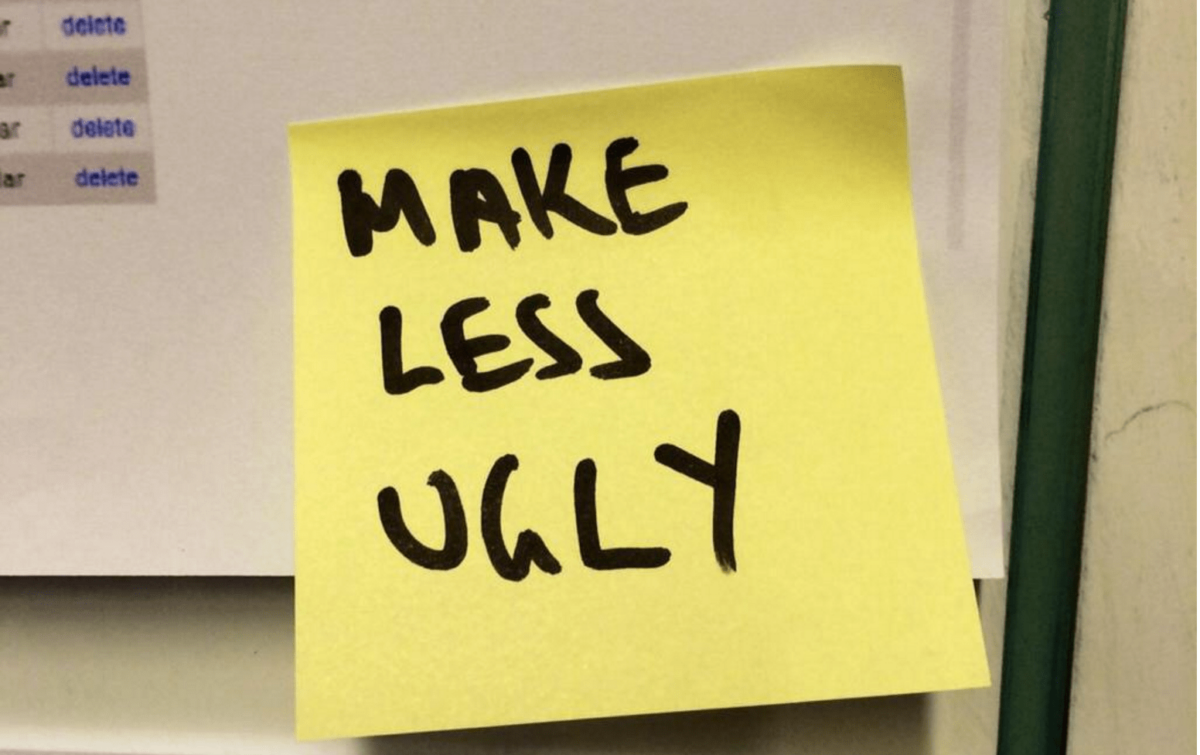
A designer’s secret weapon is the ability to solve business problems with good design. But clients don’t always realize we can do this. The result can be an awkward situation where the client starts giving design feedback, the design team becomes surly, the design starts to drift away from what it’s supposed to accomplish, and everybody gets a little cranky.
To fix this problem we should examine what’s really going on. It’s very common to get design feedback from clients on work (whether it’s a logo, direct mail, a website, or whatever) that includes comments such as “make it bigger” or “move it over there” or “make it this color.” These are specific design changes. When proposed by a client they are often given without explanation, which can be frustrating.
Sometimes design changes proposed by clients are right on target and vastly improve the design. But other times, they seem arbitrary and will certainly ruin the design. Most clients don’t mean to be arbitrary. And they are not trying to do our job for us. And they definitely don’t want to ruin the design. They want to end up with a design they can be proud of, and that does its job.
The reason they are presenting these kinds of changes, is because we have given them a design, and have asked them to tell us what they think about the design. Sometimes this is interpreted by clients as “do you like it?” Of course we want them to like it, but whether or not they personally like its specific color palette, or choice of fonts, is not the most important criteria.
Other times, and this is the problem I’m trying to get at, they interpret it correctly as a request to see if the design met the business objectives. But then, they often respond in a way that fails to outline what objectives have not been met, and why. Instead they attempt to solve the problem themselves (without realizing that’s what they’re doing) by proposing a design solution. The designer may interpret this wrongly and resent being told how to do their job. But that’s not what’s really happening.
What’s really happening (in most cases) is that the client has identified a business problem caused by the design, and instead of explaining the problem, is proposing a design solution. This is natural, and very common. It’s sometimes incredibly helpful as well since clients tend to be deeply familiar with their product or service and have a different perspective than the design team. But it can also cause problems, because in most cases the client has not been trained in design.
A better way to manage this situation would include the design director educating the client about the kind of feedback that would help the team produce the best possible design solutions. They should ask the client specific questions, and try to understand the underlying problem the client is trying to solve. Once the design team is armed with that information, they can provide intelligent design solutions that help the design meet specific business objectives.
So, here’s a suggested set of directions for how to go about providing feedback on a design.
Dear Client, we’re interested in providing the best design possible to meet your key business objectives for this project. In our discovery process, we learned that those objectives are A, B, and C.
Here are some guidelines for how to review the design and provide feedback in a way that gets us the information we need to deliver an appropriate design solution. The point is to provide useful information that helps the design team do their job better.
- Keep one objective in mind at a time, look at the design as a whole, and also at the individual elements of it. Articulate whether you think the objective is being met and how it is being met.
- If you can’t, try to articulate what is preventing it from being met. For example, the primary business objective of your logo may be that it appeals to a youth market. But if you look at it and you think of IBM and grey haired businessmen in suits, then it’s not meeting that objective. You can articulate your general feeling that it’s not right by saying something like “it makes me think of old guys in suits” or “the dark blue color is the same color as IBM’s logo”. If you instead say things like “I don’t like it. Make it a bright green color.” or “It doesn’t feel childlike enough. What if we use a handwritten font?” you’re not identifying the problem in a way that lets the designer understand what it is.
- Then, look at our description of how it’s being met, and decide if that changes your mind. If not, let us know why you think so.
- If you have an idea for a design solution to the problem, by all means speak up! But don’t make it mandatory. Let the designer include it in their thought process about how to solve the problem. And let them propose the solution. Often, you will find they have used some or even all of your idea. You may find that they’ve improved on it. You may find that it’s been ignored but you don’t care because whatever they did is so good.
So, clients, please tell us your hopes, your dreams, but most importantly, your problems! We want to know, … swear! As thanks, you’ll get our very best design solutions.
They key for designers is listening to what’s really being said, and education. I believe in teaching my clients as much as possible about the design process. The more they understand it, the smoother the projects go, and the end result is happiness all around. The designer gets to do great work. The client’s business objectives are met and they feel empowered. Everybody loves the design, and maybe somebody even gets a raise.